War of the Caterpillars and First Flowers (two videos) - 2018 Legal Marijuana Grow - Episode 8
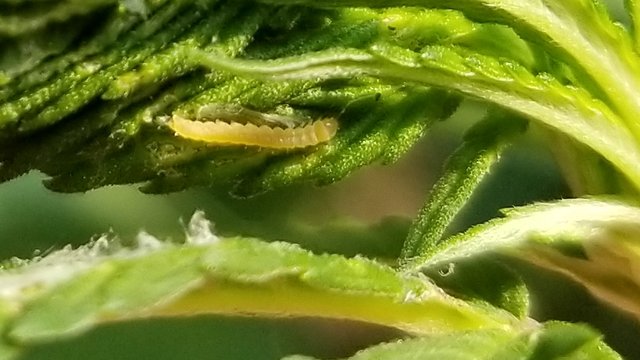
Escalating warfare vs. caterpillars; training the BCD over; first flowers & a katydid visitor.
Back Episodes
Ep1 - "Got my girls in the ground" | Ep2 - "They grow up so fast" | Ep3 - "Mysterious pest damaging leaves" | Ep4 - "What have I wrought?" | Ep5 - "Invasion of the Insect Hordes" | Ep6 - "Sometimes a girl just needs some room to breathe" | Ep7 - "6' 8" tall and still growing fast"A lot has happened...
in the two weeks since the last update. I started training the tops of the Blue City Diesel over by gently crimping and bending them.|
|
|
My goal was to train the BCD tops over and out into available sunlight, while allowing more late afternoon sun in to the Girl Scout Cookies. This has worked well, and the GSC has now almost caught up in terms of vertical height because the BCD tops are all bent over.

Caterpillar Invasion
Music: The Grim Reaper - II Presto by Aitua
I have started seeing more caterpillars - I have found and killed at least a dozen. They are pretty easy to spot now because the caterpillars use their silk to web leaves shut so they can feed in peace; all you have to do is look for leaves that are stuck together in weird ways and you have found a caterpillar.
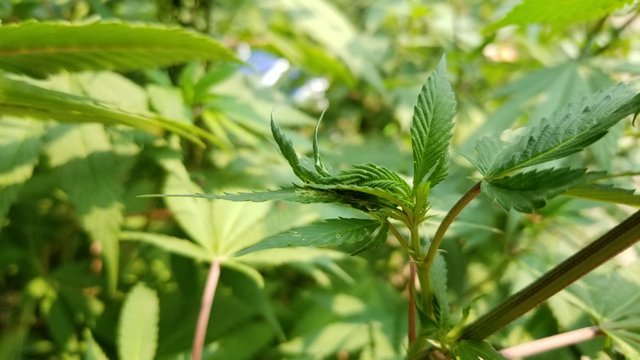
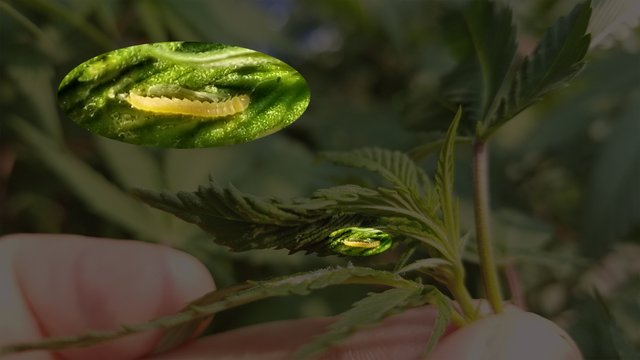
Biological Warfare...
When caterpillars are small they are particularly susceptible to a toxin found in spores produced by Bacillus thuringiensis bacteria (Bt). Bt is commonly used as a safe and organic pest control (the protein that is toxic to caterpillars does not harm anything else).
Last year caterpillars turned out to be my biggest pest by far, and they were much harder to control once they were bigger and the plants had larger buds. The caterpillars tunneled inside the buds, chewing little highways out for themselves and I had to tear the buds open to find them.
This week I did a thorough spraying with Bt and will do another spraying in a month or so during mid-flowering.

Collateral damage...

I got a little careless while moving branches around so I could spray Bt on every leaf surface. I applied a little too much force and very nearly broke one of the larger branches of the BCD all the way off. As it is, I caused a very deep split. You might think that something like this would kill the branch, but weed is a weed, dude :)
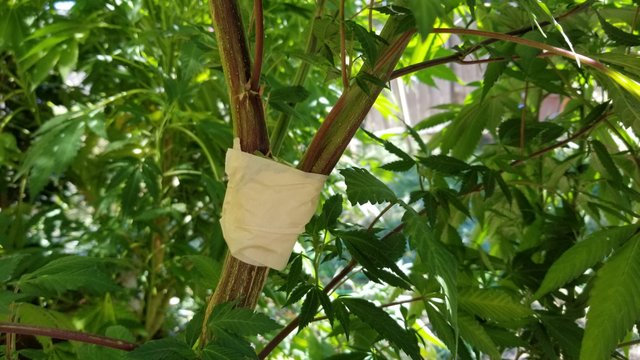
I made a quick and dirty splint with masking tape. The branch is showing no ill effects so far after several days, but of course I will keep you updated.
First Flowers and stem measurements
The BCD has just started flowering over the last week and a half and the GSC looks like she is about to any day. Taking my cue from the ladies, I gave them their first dose of flower juice yesterday. I used a combo of Roots Organics HPK and Fox Farms Big Bloom:
|
|
|
Early Flowers:


Measuring the Stems
In the comments to the last episode, @massmedicinals asked a great question: "How thick is the stem at the base for your ladies?"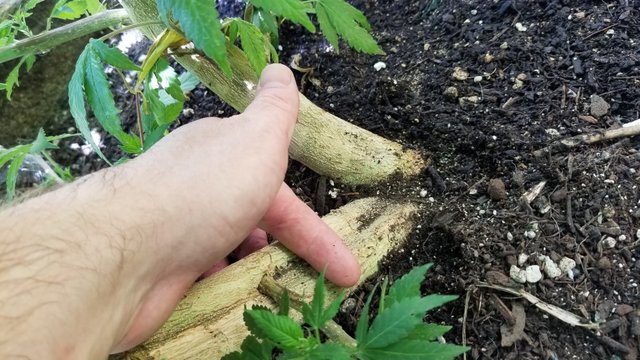
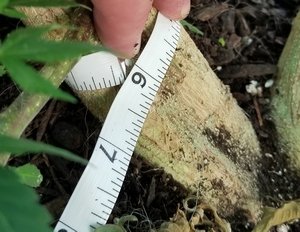
The BCD has a branch juncture that is partially below the dirt level as you can see above (the clone came with the dirt above that branch juncture and I didn't change that when transplanting it). I measured the larger branch above that juncture and it is just over 6" in circumference.
The Girl Scout Cookies stem is about 6 3/4" in circumference:
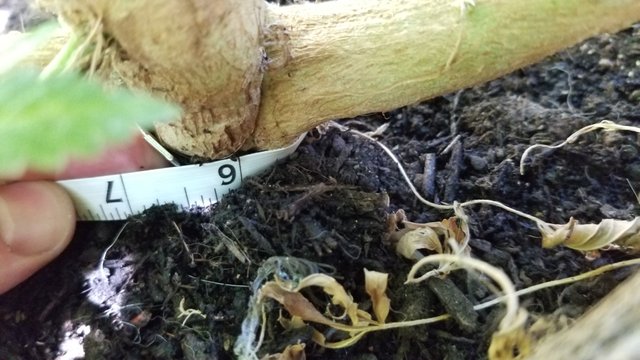
A Katydid Visitor
Music: Foot Mood And Wind by King Imagine
I misidentified this beautiful insect as a grasshopper when I first spotted it. Katydids (known as bush crickets in the UK) are not anywhere near as common here in Oregon as they are on the east coast of the U.S. and I don't have a lot of experience with them. This is actually a fork-tailed bush katydid, which I confirmed is in fact an Oregon native. The easiest way to identify katydids is the long antennae (grasshoppers have short, thick antennae). Katydid wings are also characteristically veined and patterned like the surface of a leaf.
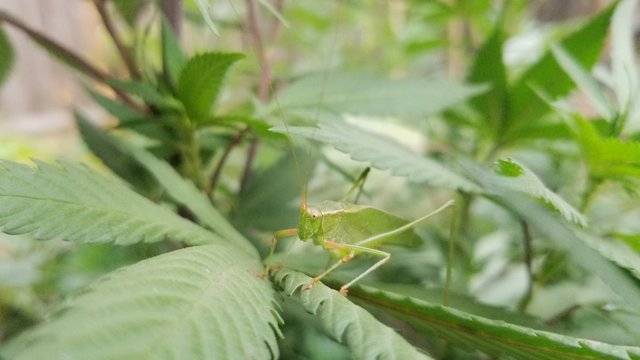

The more you know...
Today's mind-blowing insect factoid: You can use a male katydid's shrill stridulations (chirps - in the case of a katydid caused by rubbing the wings together instead of the hind legs as in a grasshopper) to accurately tell the temperature! Katydids increase the tempo of their chirping as temperatures increase. The number of chirps per 15 seconds plus 37 = the temperature in degrees Fahrenheit. Incredible! Thanks Wikipedia :)
Thankful to live in a legal state!
I am thankful to live in Oregon, a state which has finally legalized marijuana for recreational use. I can legally grow up to four plants (I have two beautiful girls). I hope to see the legalization movement continue to sweep across America regardless of the current political climate.
Cheers - Carl
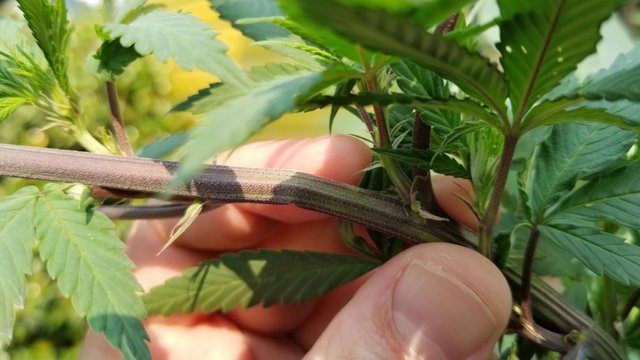
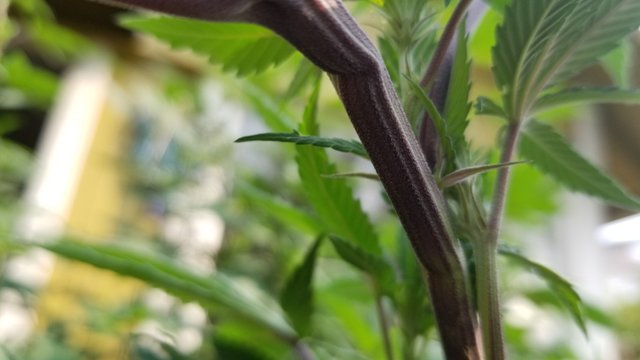


I can't even begin to think what have been going through those caterpillars minds after that!

do caterpillars have brains? if it wasnt a huge waste of taxpayer money i would suggest a study.
Damn caterpillars. It could be worse though. Back in the days of brick weed, a friend of mine bought a pound but about an ounce of it was just dead grasshoppers that had been compressed into the weed. He sat on it for a while and then he sold it to someone who offered him 20 bucks for it lol.
That GSC stem is at stalk status now. Freakin' caterpillars are the worst.
Noooooooo don't kill them :( they just want to live ..there are other methods to repel them :(
Last year I went the "repel" route, with a very strong neem oil solution, plus a few other different things I tried once it became obvious the neem was not effective. The amount of damage that even a single caterpillar can cause once it is bigger is insane. It isn't just the physical damage to the buds (although even that is pretty bad - they crawl inside the buds and work their way down an entire branch eating out a little caterpillar tunnel as they go), but the damage they cause is where the bud rot sets in. I lost over 20% of my potential harvest last year from bud rot and almost all of the bud rot set in where the caterpillar damage was. On top of what I actually lost, I had to harvest well over half my total crop far earlier than I wanted to, before it was actually ripe and ready, to prevent losing more from the bud rot.
This year it is no mercy on the caterpillars. They can do their caterpillar thing anywhere else they want to, but on my pot plants it is war.
have you tried having a patch of cabbage just for them
and relocating them it is often very effective ...
O,o that's interesting... their own cabbage patch to infest... wonders about tie in to drugs, the 1983 shopper riots, and cabbage patch dolls
It's a trick some vegan gardners like me do ... it has worked well for me
if it works, its a logical strategy :)
:)
Ah poor little demons! What else they can do? They know nothing except to eat, sleep and grow.
!popcorn
If marijuana get legal status to plant in Indonesia, it will be so fantastic, and especially for medical the cannabis will be so great, meanwhile a lot of cannabis circulated illegally in Aceh and mostly Indonesia